MCQs in Travel and Tropical Medicine 3rd edition Section1 (Epidemiology and Geographical)
*答えが間違っていると思われる設問には☆
S1-1
世界最も多い原虫感染症3つ
↓
- マラリア:毎年2億5千万人が罹患、 86万人が死亡
[WHO, 2010]
- 住血吸虫:年間200万人以上の罹患、20万人以上の死亡
[Chistulo L, TDR Nature Reviews Microbiology 2004]
- African trypanosomiasis:年間30-50万人罹患
[Cattand P, Trop Med Int Health 2001]
- American trypanosomiasis (Chagas' disease):年間30万が罹患、5万人が死亡
[Wkly Epidemiol Rec 1997; 72:1]
S1-2
感染症に罹患する頻度が最も多い国
↓
インド
タイの2倍、旅行者が下痢になるリスクはスペインの600倍
S1-3
ブルセラ症で最も多い菌種
↓
Brucella melitensis
人間や動物の感染に多いのは、Brucella abortus, suis, melitensis, やや減ってcanis
人間に多いのはBrucella melitensisで約90%
S1-4
死亡原因となるマラリア原虫の種類
↓
全ての種類
Plasmodium falciparum, vivax, ovale, malariae and knowlesiの5種類
そのうち最も死亡原因として多いのがPlasmodium falciparum
S1-5
ラッサ熱の名前の由来となった町のある国
↓
ナイジェリア
ナイジェリアからシエラレオネ、ギニアに至るアフリカ一帯、および中央アフリカ共和国などで局地的流行状態
ウイルスを保有するマストミス(ネズミ)の尿や唾液中には多量のウイルスが排出されるが、マストミスは病気にはならず、ヒトへの感染はそれらとの接触(手、足の目に見えない傷)や咬まれることなどによる。
ヒトからヒトへは血液、体液など(粘膜の接触を含む)で感染拡大がおこる。
潜伏期間は7~10(18)日で発症は突発的
米国厚生省のCDC が西アフリカ最西端のシエラレオネに調査研究基地を置き、1976年以来20年間にわたって調査した結果、致死率は感染者の1~2%であることも疫学的に判明した。
日本ではシエラレオネから帰国した人に1987 年3 月ラッサ熱が発症したが、幸い回復した。
[IDWR 2002年第35週号]
S1-6
西アフリカにだけ限定して見られるマラリアの種類
↓
Plasmodium ovale
卵形マラリアはほぼ西アフリカに限定して認める
四日熱マラリアはアフリカ全体
熱帯熱マラリアは広く分布するが、主にサハラ砂漠以南、東南アジア、南太平洋
三日熱マラリアはアフリカでも見られるが、東南アジアに広く分布
二日熱マラリア(P. knowlesi)は、以前三日熱マラリアや四日熱マラリアと混同されていたが、タイの森林地域を含む東南アジアは流行地域であることが分かっている
S1-7
地域固有の(クロロキン感受性の?)マラリアを認める地域
↓
ドミニカ共和国
クロロキン感受性のマラリアが見られる地域
中米: Mexico, Belize, Guatemala, Honduras, El Salvador, Nicaragua, Costa Rica, Haiti, Jamaica, Dominican Republic, The Bahamas
南米: Paraguay, Argentina
アフリカ: 西サハラ
アジア: 韓国, 北朝鮮
中東: イラク, シリア, トルコ, グルジア, アゼルバイジャン,
中央アジア: ウズベキスタン, トルクメニスタン, キルギスタン, タジキスタン
[CDC Yellow Book 2010 http://wwwnc.cdc.gov/travel/yellowbook/2010/chapter-2/malaria.aspx]
S1-8
腸チフスが最も多い国
↓
インド
インド、パキスタン、メキシコ、バングラディッシュ、フィリピン、ハイチの6カ国で旅行に関連した腸チフスの76%を占める
[Typhoid and paratyphoid fever. Lancet 2005]
北アフリカにも多い
S1-9
Salmonella typhi が感染を成立させるのに必要な抗原量
↓
1,000~1,000,000個
[Typhoid and paratyphoid fever. Lancet 2005]
100,000個で25%, 10,000,000個で50%, 1000,000,000個で95%
胃切や胃酸抑制薬使用で感染率上昇
S1-10
腸チフス菌の殺菌方法
↓
水や食物を60℃以上に温める
57℃以上の温度で腸チフス菌は死滅する
冷温下の食物の中でも増殖する
一般的な原則である、水は沸かして、なま物は調理して、果物は自分で剥いて食べること、それができなければ、食べるのはあきらめること(boil it, cook it, peel it, or forget it)が大切
S1-11
腸チフス菌が旅行者に広がる方法
↓
ハエ等の節足動物による食物の汚染
下水に汚染された水、貝等の飲食
他のサルモネラ菌は人畜共通感染症であるが、腸チフス菌はヒトのみに病原性を示す
S1-12
クロロ菌耐性熱帯熱マラリア(CRFM)のいる地域
↓
ベトナム
S1-7に準じる、エジプトはマラリアの非流行地域
S1-13
クロロキンを内服している旅行者に重篤な副反応が発生する割合
↓
1/10,000
身体症状、精神症状で入院する割合は1/10,000
S1-14
メフロキンを予防内服している旅行者に重篤な副反応が発生する割合
↓
クロロキンと同様に1/10,000
予防内服において痙攣や精神症状等の重篤な副反応が起きることは稀で、6500~10,600人に1人とされる
[David O, New England Journal of Medicine. 2008.]
S1-15
熱帯熱マラリアに罹患するリスクが高い地域
↓
ケニアの海岸
ケニアの海岸沿いでマラリア感染性のハマダラカに刺されるリスクは週に1回程度
西アフリカの多くの地域ではマラリア罹患のリスクは日に1回程度まで増加するが、キンシャサのような大都市(人口778万人(2005年)、中部アフリカ最大)でのリスクは低い
旅行者1000人当たりの1月にマラリアに罹患するリスクは、西アフリカで24例程度、中央アメリカ0.1例程度とされる
S1-16
ハマダラカ刺虫後に血液塗抹検査・抗原検査が推奨利用できる時間
↓
3時間以内
3時間以内の検査結果は許容できる
感染が強く疑われれば治療が先延ばしにされてはならない
(ただし現在は診断検査が可能であれば、検査結果を確認してから治療が推奨されている WHO, 2010)
S1-17
コレラが報告されている国の数
↓
20カ国以上、100カ国未満
WHOによる報告によると、2008年には190,130例のコレラが報告され、そのうち5143が死亡した(CFR 2.7%)
2004年以降コレラを報告している国の数は50~60カ国の間
[WHO, 2009 Cholera annual report]
http://www.who.int/wer/2009/wer8431.pdf
S1-18
レプトスピラ症の最も一般的な感染原因
↓
急流筏下り
レプトスピラは皮膚や粘膜の擦過傷、ひびから侵入する
急流筏下り等で汚染された水を飲み込むことでよく感染が起きる
S1-19
渡航者において、黄疸を伴う発熱の原因となる最も多い疾患
↓
ウイルス性肝炎(HAV, HBV, HEV, 時にHCV)
マラリアは原因としては2番目(成人の黄疸例が少ないから?)
S1-20
渡航者においてAfrican Tick Bite Fever (ATBF) に罹患することが多い国
↓
アフリカ南部
ATBFはアフリカ地域、西インド地域、東カリブ海等でみられる
[http://wwwnc.cdc.gov/travel/yellowbook/2010/chapter-5/rickettsial-and-related-infections.aspx]
南アフリカで開催されたアドベンチャーレースで13人のフランス人に感染の報告
[Fournier PE; Clin Infect Dis 1998]
S1-21
デング熱の既往がある人が再度デングウイルスに暴露すると
↓
デング出血熱に重症化する可能性が高まる
S1-22
ケニアとウガンダで日中のサファリを計画している人が最も気を付けるべき疾患
↓
African Trypanosomiasis
ビクトリア湖の南部・東部で、ツェツェバエに刺されることによってtrypanosoma brucei rhodesiensiに感染する
日中、動いている車に寄ってくるとされ、刺虫部は有痛性の硬結を伴い、1週間後には2-5cm程度の紅い丘疹や潰瘍病変(Chancre)を形成する
リンパ節腫脹や発熱がこれに伴う(特にT. b. rhodesiense > gambiense:西・中央アフリカ)
これらの症状が軽快後に中枢神経症状が出現する
潜伏期間は数日~長くても3週間
S1-23
主に夜間ベクターに刺されることによって感染する疾患
↓
American Trypanosomiasis (Chagas Disease)
暗い日陰に生息するreduviid (assassin) bug (サシガメ)に主に夜間に刺されることによって、T. cruziの感染が成立する
一方、黄熱やデング熱、チクングニヤ熱を媒介するAedes属の蚊(ヤブカ、ネッタイシマカ)は日中に吸血活動する
同様にAfrican trypanosomiasisを媒介するツェツェバエも日中
ウエストナイル熱、日本脳炎を媒介するculex属の蚊(イエカ)は夕暮れから夜明けにかけて、マラリアを媒介するanopheles属の蚊(ハマダラカ)は夜間に活動をする
culex、anophelesどちらともフィラリアのベクターでもある
S1-24
マラリアのベクター
↓
Anopheles spp. mosquito
S1-25
黄熱のベクター
↓
Haemagogus spp. mosquito in South America, and Aedes spp. mosquito in Africa
S1-26
Leishmaniasisのベクター
↓
sandflies
S1-27
Loa Loaのベクター
↓
red fly (chrysops fly)
L. loa is spread via the bite of the female Chrysops fly, also known as the tabanid fly (horse fly, red fly or deer fly).
Loiasis occurs only in western and central Africa.
It is estimated that between 3 and 13 million people are infected.
[Tropical Infectious Diseases: Principles, Pathogens and Practice, Vol 2, Churchill Livingstone, Philadelphia 1999]
S1-28
Dengueのベクター
↓
Aedes (Stegomyia) aegypti mosquitoes
S1-29
Onchocerciasisのベクター
↓
black fly
Onchocerciasis is caused by the filarial nematode, Onchocerca volvulus.
It is a major cause of both skin disease and blindness in endemic areas.
It is also known as "river blindness" because the blackfly vector for this infection breeds in areas near fast-flowing streams and rivers.
Humans are infected with O. volvulus via the bite of a black fly of the Simulium genus.
Approximately 10 to 12 months after initial infection (the prepatent period), the adult female worms (30 to 80 cm in length) begin to produce microfilariae.
Adult parasites can survive for up to 15 years, and each female can produce 1000 to 3000 microfilariae per day.
Unsheathed microfilariae typically are found in skin and in lymphatics of connective tissues, but also occasionally in peripheral blood, urine, and sputum.
The clinical manifestations of onchocerciasis include dermatologic manifestations (subcutaneous nodules and pruritic dermatitis) and ocular manifestations [Little MP, Lancet 2004].
☆S1-30-33
不適切問題?分かりません
S1-34
熱帯地域の長期渡航者で咽頭痛の最も多い原因疾患
↓
ウイルス性 or 細菌性咽頭炎
common is common
S1-35
プールの塩素消毒を用いても殺菌できない病原体
↓
Giardial cysts
原虫のシストは長時間、高濃度で塩素消毒しなければ殺菌できない
アスカリス等の原虫卵もまた塩素消毒に抵抗性がある
ジアルジアの殺菌には紫外線が有効
S1-36
Typhusのベクター
↓
Ticks(マダニ) Scrub Typhusのことだと思われる
Scrub typhus is a mite-borne infectious disease caused by Orientia tsutsugamushi (previously called Rickettsia tsutsugamushi).
S1-37
Cutaneous Leishmaniasisのベクター
↓
Sandflies
Leishmaniasis is spread by the bite of a female sandfly.
S1-38
Plague (Yersinia pestis infection)のベクター
↓
fleas
Over 1500 species of fleas have been identified, but only about 30 are proven vectors of plague.
[Perry RD, SO Clin Microbiol Rev 1997]
☆S1-39
Hantavirusのベクター
↓
rodent
Hantaviruses comprise a genus of enveloped viruses within the family Bunyaviridae. All medically important hantaviruses are carried by rodents of the families Muridae and Cricetidae.
ブニヤウイルス科のウイルスの多くのものは節足動物媒介性であるが(クリミア・コンゴ出血熱ウイルス,ダニ媒介)、ハンタウイルスはネズミ媒介性であるのが特徴的である
[IDWR 感染症の話 2000 年第25 週, 第26週]
S1-40
Lyme diseaseのベクター
↓
Ticks
Lyme disease is a tick-borne illness caused by three pathogenic species of the spirochete Borrelia burgdorferi sensu lato. B. burgdorferi is the sole cause of the disease in the United States.
S1-41
Schistosomiasisのベクター(☆正確には中間宿主)
↓
Aquastic snails
卵 ⇒ミラシジア ⇒適切なsnailの体内へ ⇒3-5週間でスポロシスト⇒セルかリア ⇒snailから水中へ(48時間生息可能) ⇒経皮感染
S1-42
River blindnessのベクター
↓
Blackfly
cf. S1-29
S1-43
West Nile Feverのベクター
↓
Mosquito
cf. S1-23
S1-44
Relapsing Fever (borreliosis)のベクター
↓
Ticks
Relapsing fever, caused by spirochetes of the Borrelia genus, is an arthropod-borne infection that occurs in two major forms: tick-borne (TBRF) and louse-borne (LBRF)[Barbour AG. Relapsing fever. 2005. p. 268-291].
Louse-borne relapsing fever is caused by B. recurrentis. It is principally a disease seen in the developing world; it is spread from person to person by the body louse and can occur in epidemics, including large ones involving millions of people.
S1-45
Chagas Disease (American Trypanosomiasis)のベクター
↓
Triatomine bugs
The vector for this infection is the reduviid bug, also known as the triatomine insect or "kissing bug". There are more than 100 different triatomine species. However, most infection is transmitted by one of six or seven species, the most common of which is Triatoma infestans. These insects measure 5 to 45 mm in length, depending upon the species. Once a bug is infected, it remains so for life and can transmit infection for several years.
cf. S1-23
S1-46
Yellow Feverのベクター
↓
Mosquitoes
cf. S1-23
S1-47
Dengueのベクター
↓
Mosquitoes
cf. S1-23
S1-48
人の死亡原因となることが多い動物
↓
毒蛇
死亡率は良く分かっていないが1978-1995年における死亡数は概算で下記の通り、毒蛇による死亡65,000人、クロコダイル600-800人、象300人、鮫9人、虎やライオン800人、カバ130人、ハイエナ40人
S1-49
田舎では珍しい疾患
↓
デング熱(都会型)
一方で、Chagas disease, Bartonella and Japanese encephalitis は田舎でもみられる
Bartonellosis, or Carrion's disease, is a biphasic disease caused by Bartonella bacilliformis and transmitted by sandflies of the genus Phlebotomus.
S1-50~53
殺人事件の危険性が相対的に高い地域
↓
ジャマイカ>ロシア>アメリカ>西ヨーロッパ
S1-54
WHOに届出義務のある疾患
↓
Cholera
Under the 1969 version of the International Health Regulations, the United States and other World Health Organization (WHO) Member States were required to report only four diseases: smallpox, cholera, plague, and yellow fever[CDC]. 1971年1月より施行[予防接種ハンドブック第4版]
1982年5月にIHR改正により痘瘡(天然痘: smallpox)が除外[予防接種ハンドブック第4版]
Cholera, plague, and yellow fever are the three diseases currently notifiable to the World Health Organization[WHO. The revision of the International Health Regulations. Wkly Epidemiol Rec 1996]
A case of the following diseases is unusual or unexpected and may have serious public health impact, and thus
shall be notified:
- Smallpox
- Poliomyelitis due to wild-type poliovirus
- Human influenza caused by a new subtype
- Severe acute respiratory syndrome (SARS).
An event involving the following diseases shall always lead to utilization of the algorithm, because they have demonstrated the ability to cause serious public health impact and to spread rapidly internationally :
- Cholera
- Pneumonic plague
- Yellow fever
- Viral haemorrhagic fevers (Ebola, Lassa, Marburg)
- West Nile fever
- Other diseases that are of special national or regional
concern, e.g. dengue fever,Rift Valley fever, and meningococcal disease.
[IHR 2005]
S1-55
Crude rate (粗率)の求め方
↓
with the total population of an area as denominator
A crude rate is defined as the number of cause-specific events (e.g. deaths, disease cases, individuals at risk) over a specified period of time (e.g. a year) divided by the total population.
S1-56
infant mortality rate (乳児死亡率)の対象年齢
↓
1歳まで(/1000 live birth)
neonatalなら28日、perinatal なら死産+7日
S1-57
incidence, prevalanece and attack rateの違い
prevalence rate(有病率):ある一時点において疾病を有している人の割合、一般に10万人当たりに換算する。
incidence rate(罹患率 = 発生率):ある一定期間内における新規疾病の発生頻度、一般に10万人当たりに換算する。
Morbidity(罹病率): 疾病の用語のひとつ、死亡ではない。prevalence rate, incidence rateを含む
Mortality(死亡率): 死亡の用語のひとつ。
Attack rate (発病率):罹患率の中の指標の1つ
S1-58
東アフリカにおいてChloroquin, Doxycycline, Proganil and Fansidarの中で費用対効果の高い抗マラリア薬
↓
Doxycycline
治療に対しての効果か予防に対しての効果かが不明確
予防に関しては、クロロキン耐性増加のため、クロロキン予防内服の有効地域はMexico, areas of central America (west of the Panama canal), the Caribbean, East Asia, a few Middle Eastern countriesのみ
その他の全ての地域ではatovaquone/proguanil, mefloquine, or doxycyclineがCDC, WHOによって推奨されており、熱帯熱マラリアに対して95%以上の効果を持つ
[David O. New England Journal of Medicine. 2008]
S1-59
Rabies, Typhoid, Hepatitis B and Hepatitis Aに対して、費用対効果の高いワクチン。
↓
Hepatitis A
A型肝炎ワクチンは必要性、効果共に高い
S1-60
incidence, prevalence, durationの関係式
↓
Incidence x Duration = Prevalence
S1-61
最も一般的な重症の節足動物媒介性疾患
↓
Malaria
およそ10,000症例の輸入感染症例が報告されている。
世界人口の約半数がマラリア罹患のリスク
毎年2億5千万人がマラリアに罹患
毎年86万人がマラリアにより死亡
死亡症例の約85%アフリカに住む小児
デング熱はここ50年間で発生数が30倍になり、年間約5000万人が感染、25億人が感染のリスク下にある[WHO, 2009]
S1-62
最も一般的な死亡原因となる節足動物媒介性疾患
↓
Malaria
S1-63
マラリアのリスクが最も高い地域
↓
西アフリカ
S1-64
黄熱のリスクが最も高い地域
↓
The Ivory coast(Cote d'Ivoire)
西アフリカが最もリスクが高い
入国に際してイエローカードを要求される地域
Angola
Benin
Burkina Faso
Burundi
Cameroon
Central African Republic
Congo (Republic of the ~)
Cote d'Ivoir
Democratic Republic of the Congo
French Guiana
Gabon
Ghana
Liberia
Mali
Niger
Rwanda
Sao Tome and Principe
Sierra Leone
Togo
[CDC Yellow book 2010]
S1-65
黄熱流行地域で、Aedes aegypti が繁殖する家屋が1%以下ならリスクがないと考えられる(?)
主なベクターであるAedes aegyptiは都市型
S1-66
黄熱に罹患するリスクがある地域
↓
Argentina
http://wwwnc.cdc.gov/travel/yellowbook/2010/chapter-2/yellow-fever.aspx
S1-67
渡航中に致死的外傷を負う理由で最も多いもの
↓
交通事故
次に溺死、感染症は死因の約2%
リスクは地域によって異なり、最も危険な地域では殺人による死亡が8%にも上る
S1-68
渡航中に非致死的外傷を負う理由で最も多いもの
↓
転落
S1-69
結核の推定罹患率が最も高い地域
↓
Sub-Saharan Africa
http://gamapserver.who.int/mapLibrary/Files/Maps/Global_MDG6_TBprevalence_2007.png
S1-70
結核治療に最も効果的な手法
↓
DOTS
S1-71
H5N1鳥インフルエンザの主な保有宿主
↓
wild ducks
Since late 2003, highly pathogenic H5N1 has caused extensive and unprecedented multiple outbreaks among poultry across Eurasia and appears to have become established as an endemic virus in poultry and ducks [AU Tiensin T, J Infect Dis. 2009].
S1-72
ライム病の流行地域
↓
temperate zones of the northern hemisphere
欧米では現在でも年間数万人のライム病患者が発生し、さらにその報告数も年々増加していることから、社会的にも重大な問題となっている
日本では、1986年に初のライム病患者が報告されて以来、現在までに数百人の患者が、主に 本州中部以北(特に北海道および長野県)で見い出されている
http://www.cdc.gov/ncidod/dvbid/lyme/ld_Incidence.htm
S1-73
ライム病がみられる国
↓
Austria
欧州、アジア、アメリカ北東部・中部・北部の温暖な森林地帯
S1-74
Onchocerciasis Control Programに使用される殺虫剤
↓
Temepos (Abate)
An organophosphate, temephos (or Abate@), was selected for Onchocerciasis Control Programme
and Aquatic Monitoring in WestAfrica, after numerous laboratory and field tests, on account of its
efficacy against the larvae of the vector and its low toxicity for the non-target fauna [Dejoux and Troubat, 1973]
S1-75
Onchocerca volvulus における他のfilariasisと異なる特徴
↓
死んだmicrofilariae に対するアレルギー反応で症状を呈する
The adult worms of O. volvulus reside in fibrous skin nodules where they are protected from the host immune response. The microfilariae, in contrast, are capable of moving through subcutaneous and ocular tissues. Although they provoke a minimal immune response while alive, as they die they incite a clinical inflammatory response.
S1-76
途上国の僻地におけるOnchocerciasisの流行程度を調べる方法
↓
触診による皮膚小結節の数から類推する
S1-77
入浴することでSchistosomiasisに最も感染しやすい場所
↓
the Zambesi near Victoria Falls
アフリカ大陸でも頻度が高く、続いて東南アジア
http://wwwnc.cdc.gov/travel/yellowbook/2010/chapter-5/schistosomiasis.aspx
S1-78
各地域における優勢なSchistosomiasisの種類
Brazil
↓
S mansoni
YemenやSaudia Arabiaを含むアフリカ、南アメリカに認め、最も流行地域の分布が広い
S1-79
Philippines
↓
S japonicum
Philippines, Indonesia, southern China and Yangtze basinに限局する
S1-80
Southern China
↓
S japonicum
S1-81
Vietnam
↓
S mekongi
Mekong Delta region
S1-82
Mozambique
↓
S hematobium
ナイル川周辺やYemenを含むsub-Saharan Africaに多い
S intercalatum はGabon, Cameroons and Democratic Republic of the Congo等のsub-Saharan Africaの一部に認める
http://www.who.int/wormcontrol/documents/maps/en/contents.pdf
S1-83
途上国において死亡原因となる感染症で最も多いもの
↓
Acute respiratory infections (ARI)
ARI, AIDS, Diarrheal diseases, TB, Malaria, Measlesで途上国における感染症による死亡原因の90%を占める
その中でも最も重要なのがARI
ARI is a leading cause of death in children under the age of five in developing countries.
http://www.unicef.org/specialsession/about/sgreport-pdf/08_AcuteRespiratoryInfection_D7341Insert_English.pdf
S1-84
途上国において、5歳以下の死因となる感染症で最も多いもの
↓
Diarrheal disease
5歳以下の死因としては下痢と肺炎がほぼ同等
WHO統計の項目ではHIV/AIDS, Diarrhea, Measles, Malaria, Pneumonia and Injuries の記載があり
Pneumonia ≒ Diarrhea, Injuries の順で死因に占める割合は多い
http://apps.who.int/ghodata/
S1-85☆
Leishmaniasis罹患率が最も高い地域
↓
India
Visceral leishmaniasis (VL) is caused primarily by the two related species: Leishmania donovani and L. infantum (synonym L. chagasi).
VL due to L. donovani occurs in South Asia (India, Bangladesh, and Nepal) and East Africa (Sudan, Ethiopia, Kenya, Somalia).
It is estimated that 1 to 1.5 million cases of cutaneous leishmaniasis occur annually; however, many more cases are not reported. More than 90 percent occur in Saudi Arabia, Iran, Afghanistan, Brazil, and Peru.
解説には年間600,000症例の90%以上がインド、バングラディッシュ、ネパール、スーダン、ブラジル北東部で起きるとされるがVSに限定してのことと思われる
S1-86
Parenteral感染が感染が最も多い疾患
↓
Leishmaniasis
VL sand fly vectors include more than 10 species of the genus Phlebotomus (in the Old World) and Lutzomiya longipalpis (in the New World). VL can also be transmitted via intravenous drug use, blood transfusion, organ transplantation, congenital infection and laboratory accidents; these modes of transmission are rare.
その他、Chagas病等でも起きる
S1-87
デング熱の流行地域の変遷
↓
多くの亜熱帯地域に拡大している
Dengue is the most rapidly spreading mosquito-borne viral disease in the world. In the last 50 years, incidence has increased 30-fold with increasing geographic expansion to new countries and, in the present decade, from urban to rural settings.
An estimated 50 million dengue infections occur annually and approximately
2.5 billion people live in dengue endemic countries.
[WHO Guideline 2009]
S1-88
Tick Borne Encephalitis (TBE) 流行地域の動向
↓
流行地域が拡大傾向でNorwayでも1998年に報告が症例されている
Tick(ダニ)の感染率は欧州の一部の地域では0.1%から、シベリアでは40%まで様々
最新の画像[もっと見る]
-
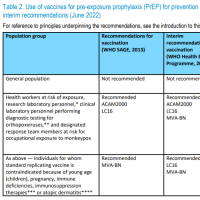 サル痘 Monekypox
2年前
サル痘 Monekypox
2年前
-
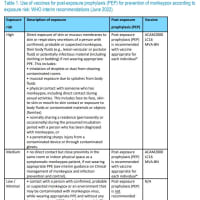 サル痘 Monekypox
2年前
サル痘 Monekypox
2年前
-
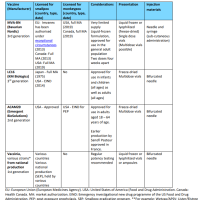 サル痘 Monekypox
2年前
サル痘 Monekypox
2年前
-
 サル痘 Monekypox
2年前
サル痘 Monekypox
2年前
-
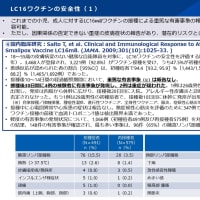 サル痘 Monekypox
2年前
サル痘 Monekypox
2年前
-
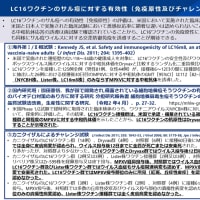 サル痘 Monekypox
2年前
サル痘 Monekypox
2年前
-
 サル痘 Monekypox
2年前
サル痘 Monekypox
2年前
-
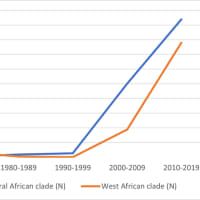 サル痘 Monekypox
2年前
サル痘 Monekypox
2年前
-
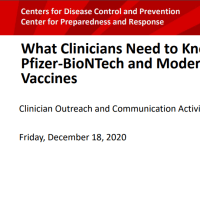 COVID-19ワクチン
3年前
COVID-19ワクチン
3年前
-
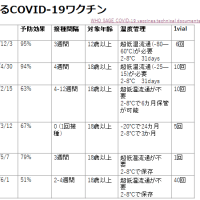 COVID-19ワクチン
3年前
COVID-19ワクチン
3年前
「MCQ in T&TM」カテゴリの最新記事
 Certificate in Travel Health (ISTM)受験に必要なこと
Certificate in Travel Health (ISTM)受験に必要なこと MCQs in Travel and Tropical Medicine 3rd edition Section10 (Psychiatric and...
MCQs in Travel and Tropical Medicine 3rd edition Section10 (Psychiatric and... MCQs in Travel and Tropical Medicine 3rd edition Section9 (Air Travel)
MCQs in Travel and Tropical Medicine 3rd edition Section9 (Air Travel) MCQs in Travel and Tropical Medicine 3rd edition Section8 (General Travel)
MCQs in Travel and Tropical Medicine 3rd edition Section8 (General Travel) MCQs in Travel and Tropical Medicine 3rd edition Section7 (Special Activities)
MCQs in Travel and Tropical Medicine 3rd edition Section7 (Special Activities) MCQs in Travel and Tropical Medicine 3rd edition Section4 (Pre-travel Consu...
MCQs in Travel and Tropical Medicine 3rd edition Section4 (Pre-travel Consu... MCQs in Travel and Tropical Medicine 3rd edition Section3 (Vaccines)
MCQs in Travel and Tropical Medicine 3rd edition Section3 (Vaccines) MCQs in Travel and Tropical Medicine 3rd edition Section2 (Arthropods, Mosq...
MCQs in Travel and Tropical Medicine 3rd edition Section2 (Arthropods, Mosq... MCQs in Travel and Tropical Medicine 3rd edition Section1 (Epidemiology and ...
MCQs in Travel and Tropical Medicine 3rd edition Section1 (Epidemiology and ... MCQs in Travel and Tropical Medicine 3rd edition Section6 (Fish Hazards)
MCQs in Travel and Tropical Medicine 3rd edition Section6 (Fish Hazards)















